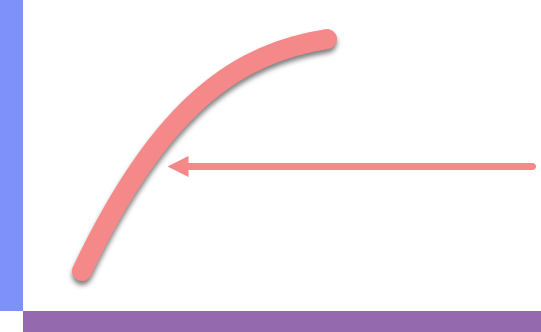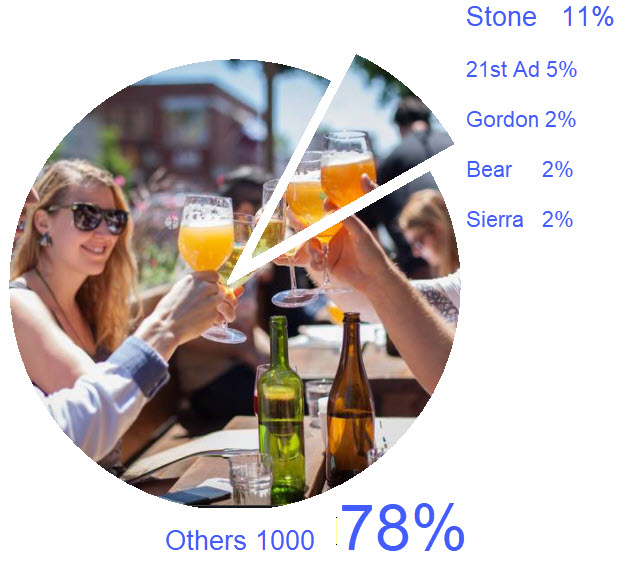Competitors
They are people or companies that offer your customers alternatives to your product so that they obtain a benefit: satisfaction, improvement, profit, solve a problem, or reduce costs.
Competitors can be direct, when it is the same category of the product, indirect when it is a substitute, that is, a different category of product that meets the same need although it does so with different degrees of satisfaction, and some authors suggest that they also take take into account the potential when companies from totally different branches could enter the market to satisfy the same need, change it, or even replace it.
Market structure
It is the behavior of the offer based on the entry barriers (requirements that must be met to enter the market) for new participants and that determines the ability of current bidders to define prices and other competition strategies.
Main barriers to entry
|
Type of barriers |
Description |
Examples |
|
Legal |
It requires a patent, license, permit, right, or belonging to a group |
To produce Cognac you must be a member of the 'National Cognac Office' |
|
Scale |
Minimal production required |
Google has 1 million servers, a competitor is unlikely to match that infrastructure |
|
Product differentiation |
A brand is well positioned as a specialist |
OralB is a well-positioned brand of dental products, it is difficult for a new one to change opinions |
|
Access to suppliers or distributors. |
Some industries have explicit or implicit agreements to limit entry to other participants. |
A new brand has to start negotiations with distributors from scratch. It can take years.. |
|
Technological |
You need access to a very specialized technology or 'KnowHow'. |
Intel has 90,000 patents, and invests 3,000 MUSD in R&D per year. |
You must know what the entry barriers are in your sector and the market structure of your product, and if necessary modify its characteristics to enter a structure that allows you more options, for example differentiate the product to go from perfect competition to competition monopolistic.
Market structure
|
|
|
|
|
|
|
|
|
|
|
|
|
|
|
|
|
Regulated monopoly only 1 seller, but legally limited. |
|
|||
|
Monopsony Only 1 buyer |
Perfect competition Many undifferentiated sellers and buyers |
Monopolistic competition Differentiated or specialized products |
Oligopoly Few suppliers |
Monopoly Only 1 supplier |
|||||
|
|
Oligopsony Pocos compradores |
|
|
|
|
Dominant company 1 more than 70% |
|
||
Your product has to be as far to the right side (blue on the image) as possible, as it implies more control over the price and it is more difficult for competitors to enter the market ; more control over the price, there are more options, and more profit.
Supply
It is the quantity that producers are willing to sell at various prices during a specific period. It is expressed by a graph called the 'supply curve' 21 4
|
Law of Supply: The higher the price, the higher the quantity offered. |
SUPPLY CURVE
|
Price |
|
|
|
|
||
|
Supply |
||
|
|
||
|
|
||
|
|
||
|
|
Quantity |
|
20 years ago Traditional beer was popular in Europe, but not so much in America, where there were about 1,000 companies, but little by little it was gaining popularity, which increased demand and the price tripled. Now there are at least 10,000 companies on the continent.
Many food companies have the capacity to produce different beverages, if the price of beer increases, and they can overcome the entry barriers, they will stop making juice to make beer and obtain greater profit, if the price falls, some will stop producing it to search a more profitable product.
In a monopoly market there is no "supply curve" because there is only one supplier , in theory no one can overcome entry barriers, remember that for it to be classified as a monopoly there should be no close substitutes. A patent could be a monopoly, but if the technology involved is not complex, there will be substitutes.
As in the case of demand, there are factors that can increase supply, in this case production costs, related prices (which are now relative to production), and technology.
Sheet
The suggested sheet shows the market share of the main competitors, it is preferable that you complete it with respect to the competitors in the niche market 'craft beer' than in a broader category 'beer'
Craft Beweries in California, USA. 103
Market Structure: Monopolistic competition
|
|
|
|
|
|
|
|
|
Company |
Characteristics |
Sales |
Market share |
|
|
|
|
|
Mill. USD / año |
% |
|
|
|
Stone Brew |
Good distribuition net |
1000 |
11 |
|
|
|
21st Amendment |
Youth market |
500 |
5 |
|
|
|
Gordon |
Several business areas |
100 |
2 |
|
|
|
Bear Republic |
|
100 |
2 |
|
|
|
Sierra Nevada |
Traditional, well known |
100 |
2 |
|
|
|
Other 1000 companies |
Locales |
7200 |
78 |
|
|
|
TOTAL |
|
9000 |
100% |
 Competitor, main characteristics, and annual sales..
Competitor, main characteristics, and annual sales..
In the example we show the largest companies, and we group the majority into "Other 1000" (we say how many there are) that will give us total sales. This 'other' group could also have important characteristics, such as 'local presence' that pose a competitive challenge. In some industries, other relevant 'groups' as competitors may be imports, the informal economy, subsidized products, or indirect competitors.
 Market share.
Market share.
In the graph we have that the concentration for 4 companies is 20%, it is a monopolistic competition market. It is important to know what advantages and strategies the main participants have, and sometimes those with the highest growth, or who stand out for other reasons.
Processor
|
|
|
|
||
|
|
Market study |
|
||
|
|
Chapter 1.3. Competitors Craft Beweries in California |
|
||
|
|
In the state there are 1,100 craft breweries, with 65,000 employees, and sales of 9,000 million dollars a year, in a market with a monopolistic structure, because the concentration of 4 companies is 20%, and unique values are emphasized for each brand such as tradition, youth, flavor, specialty, and local flavor. Although there have been important brands since the 70s such as Anchor, Sierra Nevada, and New Albion, the companies with the highest sales were founded less than 10 years ago, with investments that allowed them to design good marketing channels. 103 |
|
||
|
|
Market Share |
|
||
|
|
|
|
|
|
|
|
The main opportunities are in and take advantage of and strengthen local, individual and collective brands, including "made in ...", the integration of young brewers, clean processes, and form strategic alliances to compete in the national market. |
|
||
|
|
|
|
||
|
|
|
|
||
More...
Creado con el Personal Edition de HelpNDoc: Producir libros electrónicos fácilmente

